REVIEW: LEGO Horizon Adventures is a Vibrant Virtual Playground
Are you ready for the hunt?
I’ll be honest. I wasn’t an early adopter of Horizon Zero Dawn back in 2017. Breath of the Wild had just come out, and I was more interested in exploring a post-apocalyptic Hyrule than a post-apocalyptic Earth. But when Zero Dawn got the PS5 patch, I decided to give the game another shot on my new PS5 and I was absolutely hooked. The world building is second to none, all of the characters are richly complex, and the visuals are truly something special – especially in the follow-up, Horizon Forbidden West. So you can imagine my surprise when Sony not only announced that Horizon’s world was about to get LEGO-fied with LEGO Horizon Adventures, but that it was coming to the Nintendo Switch in addition to the PS5. And honestly? The game… is fun! Wonderfully, beautifully, shockingly fun.
It’s serendipitous that I had the opportunity to review LEGO Horizon Adventures; I’d recently been making my way through Horizon Zero Dawn Remastered, so the original game’s story was quite fresh in my mind. Interestingly, though, LEGO Horizon Adventures blazes its own trail through familiar narrative terrain. It’s more of an adaptation than remake, one that’s far more kid-friendly, and one that’s far more condensed (it took me about 7 hours to roll credits, as opposed to the 40+ hour runtime of Zero Dawn). But even though a lot of the original story was pushed to the wayside, LEGO Horizon Adventures hits a lot of the same emotional beats – and it’s a lot funnier, too.
One of the more notable things about LEGO Horizon Adventures is that it’s not developed by Traveller’s Tales, the longtime LEGO video game developer most famous for the LEGO Star Wars series. Instead, LEGO Horizon Adventures is a co-development venture by Guerrilla Games (who made the original series) and Studio Gobo (who had previously collaborated on Hogwarts Legacy and Redfall). What this results in is a very different approach to what a LEGO game could be – most notably in how LEGO Horizon Adventures is presented.
Rather than dropping a bunch of LEGO builds and minifigs in a hybrid real-world environment, the entire world of LEGO Horizon Adventures is hand-crafted with LEGO bricks. The PlayStation Horizon games have always been impressive to look at, but it’s equally (if not more) impressive to see it fully rendered in LEGO form. Instead of a running stream of realistic CGI water, it’s a running stream of realistic blue LEGO bricks; rather than rendering photorealistic trees, the developers have you running around beneath a canopy of LEGO trees like those found in so many real world LEGO sets.
By crafting a virtual world made with realistic LEGO creations, the developers have conjured up a unique sense of immersion, as if you’re acting out scenes from a child’s imagination. You’re playing through diorama-like levels full of hidden treasures and branching paths, and it’s just a joy to experience. The game perfectly captures the childhood feeling of wonderment when playing with LEGOs (yes I know the plural of LEGO is LEGO, just let me have this).
But back to my comment about the game being funny! LEGO Horizon Adventures feels more in-line with The LEGO Movie’s brand of humor than any other LEGO game I’ve played. The dialogue is witty and sharp, the physical comedy in the cut-scenes often seems inspired by the era of The Three Stooges, and you can tell the voice actors (most of whom have reprised their roles from the original game) had an absolute blast giving a new spin on the source material. Aloy is definitely more of a cartoon character than her Zero Dawn version, and it works exceptionally well in this context.
Really, all of the characters are more hammed up, but the essence of who they were in the original game is not lost here in this new adaptation. Aloy wants to figure out where she came from and who her mother is. Varl wants to prove himself to be a hero and not get lost in the shadow of his war chief mother. Erend is still hunting for treasure, but this time it’s a horde of ancient donuts. And Sylens is still a mysterious and technologically-savvy figure, but now one with killer DJ skills. The main villains are also more over-the-top versions of themselves, and even the narrator is aware that you, the player, are playing a video game. It’s all very meta-textual and clever and further supports my personal theory that this game is a retelling of an older story via a child’s imagination as they’re playing in their bedroom.
I would also be remiss not to take a moment to acknowledge how much I miss Lance Reddick in the role of Sylens. I didn’t know how Guerilla Games would handle his passing, considering his voice and likeness are intrinsic to the DNA of the Horizon series. And while we don’t know what will happen in the third game in the main series, we now know that Tim Russ (aka Tuvok from Star Trek: Voyager) took over the role in LEGO Horizon Adventures – and I think he does an excellent job. While his voice is not as deep as Reddick’s, he nails the vocal cadence and intonation that Reddick brough to Sylens. I’d be very interested to see Russ’ take on Sylens in the next proper Horizon game, should the story go in that direction.
Now, let’s talk about the gameplay. In many ways it’s like the Traveller’s Tales LEGO games: you explore an area, collect LEGO studs as currency, build random things to get rewards and progress through the level – all of your basics are here! But the combat is what really makes LEGO Horizon Adventures stand apart. Instead of swinging a lightsaber or firing a blaster, most of the gameplay is centered on Aloy’s bow and her focus. When you activate her focus, a pulse goes across the entire screen, highlighting breakable objects that she can then use her bow to fire an arrow and break said objects – including breakable weak points on machine enemies. It’s a super simplified version of how the gameplay works in the main Horizon games, but it adds a dynamic layer to both exploration and combat scenarios in this iteration of the series. Also, Aloy’s bow and arrow is not the only weapon you can use!
As you advance in the story, you come across three other playable characters that each have their own weapons: Varl, with his throwing spear that can drill through enemies; Teersa, with her basket of bombs that she throws across the stage; and Erend, with his giant hammer that can be swung or used as a battering ram. Each character has their own strengths and weaknesses in levels, and sometimes you can only find a secret thing with an ability the other characters don’t have, so the game really encourages you to either play co-op with a friend, or to rotate your playable character more often than you might prefer.
I would normally be fine with this, I don’t mind it when games want me to try different things, but my one major complaint with the multiple characters is that they don’t level up at the same rate. So, by the end of the game, you could have Aloy at level 16 and Teersa at level 8 – which can then be annoying if you need to use Teersa’s bombs for something, and now she’s so much weaker to play as than Aloy. It’s not a game breaking issue, it’s just annoying to see uneven leveling in a video game released in 2024.
In addition to each character’s basic main weapons, you will also come across rare and special versions of their weapons, like a multi-shot arrow for Aloy that fires off like a machine gun, or a giant shark bomb for Teersa that will swim across the ground and explode whatever it hits. There are also secondary gadgets that any character can use, such as a double-boost jet pack that will give you an extra high jump and burn anything that’s flammable, or a reflective shield that will bounce any projectiles back at your enemies. They add a really fun aspect to the gameplay beyond just combat, too – especially the elemental weapons and gadgets.
As is the norm for most games these days, LEGO Horizon Adventures’ game world is highly interactive. This can be in small ways, like kicking up LEGO bricks as you’re walking around, or destroying little micro builds to get more studs to spend at your home base. But it’s more fun in the big ways, like grass being flammable or water both conducting electricity and freezing. You can also shoot an arrow through any elemental section of the environment to spread that element to another object or enemy, which makes the world feel super connected and alive as you’re adventuring along and fighting enemies – and the enemy encounters can be quite challenging, too!
There are five difficulty modes to accommodate all levels of players: Story, Scout, Adventurer, Machine Hunter, and Hero. I played through on Adventurer, and by the end of the game my palms were getting sweaty because it throws a lot at you. Thankfully, there is a pretty gradual difficulty curve, so it’s not like things suddenly get impossible to do, but I was really pleased to play a LEGO game that actually challenged my skills the more I progressed through the story. Additionally, you can enable an invincibility mode that will prevent the playable character from dying, so if you’re really in a pinch (or if you’re playing with a little sibling) you can just toggle that option and enjoy the ride. Regardless of your difficulty settings, there is a pretty extensive skill upgrade tree that you can use to power up all of the characters at once. These upgrades are not tied to experience points, but you do need enough studs to unlock them, which you earn by playing through and completing levels.
Where you get to spend all of the studs you earn is in the game’s home base area, Mother’s Heart. It initially starts out small, with just one main section, but as you progress you open up additional sections with different themes. Your skill upgrades are handled at the All-Mother Tree, but beyond that you have the customization hut where you can change your character’s attire to other pre-set costumes, or you can create your own minifig outfit with different elements from different minifigs. There’s also the Community Jobs Board which gives you a bunch of jobs and challenges to do, like complete a mission with a specific character, or decorate so many buildings in Mother’s Heart.
As you complete these jobs, you gain golden bricks (which you also get for completing story missions) and these golden bricks allow you to unlock more and more customization options within your home base – from additional costumes, to entire new buildings, color schemes, and decorative elements. It’s an addictive system that adds a lot of replay value to the game, even after you roll the credits. Similarly, after a certain point in the story, you’re able to go back to previous worlds to take on Apex Machine Hunts, which eschews all of the exploring for some brutal machine hunting and combat encounters. It’s a really solid gameplay hook that can keep you engaged beyond the end credits. For reference, I finished the game with 47 Gold Bricks, and there’s still buildings I can’t unlock until I hit 60.
My only one complaint about the home base is that there’s no map you can read to see where things are. You just have to wander around and figure things out. It’s not so bad at first, but as your home base expands it can get very busy and it can be a hike to journey from one end to the other. The more I played the game, the more a map screen could have helped tremendously, and even a quick travel option to cut down on all the walking around would have been a nice little bonus. But really, I’m just nitpicking an otherwise excellent experience.
Perhaps the most surprising thing about LEGO Horizon Adventures is how well it runs on the Nintendo Switch. In my time playing the game, I only had two framerate hiccups that were quickly resolved, even when there were multiple human and machine enemies running around on the screen. The resolution and textures were also very impressive, especially in Handheld Mode. I mostly played the game in Handheld Mode, but even in Docked Mode I was impressed with the performance. Now, I will say the game unexpectedly crashed on me twice. Not really sure what happened, but I’m sure the developers will patch it up as soon as they can. Otherwise, the game was a dream to play on Switch. Sure, it’s not going to look as high fidelity as the PS5 version, but LEGO Horizon Adventures will give a lot of third-party (and even some first-party) Switch games a run for the money in terms of performance and visuals.
LEGO Horizon Adventures is the definition of a surprise. No one ever conceived of the game, no one thought it would ever come to the Nintendo Switch, and I certainly didn’t expect it to run as smoothly as it does on such old hardware. But I can honestly say it’s one of the most fun gaming experiences I’ve had all year, and I am so glad that it’s a good game. From the voice acting to the visuals to the addicting gameplay loop, LEGO Horizon Adventures is the perfect game to play if you’re just needing an escape from the real world. I had an absolute blast with it, and I really do hope we get a Forbidden West inspired sequel in the future, because this is the single best LEGO game I have ever played.
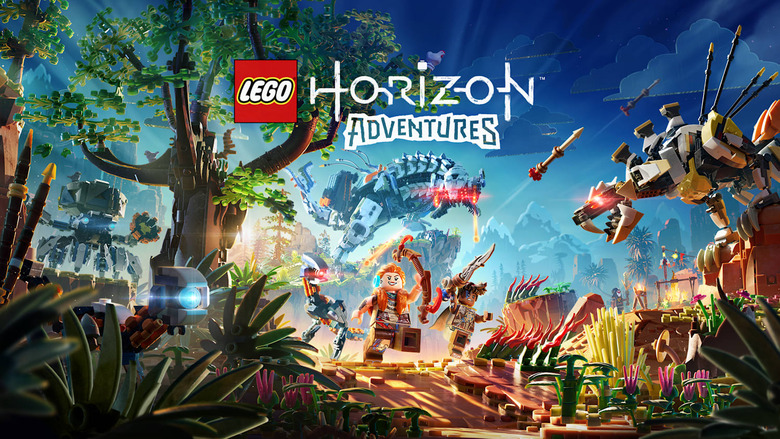
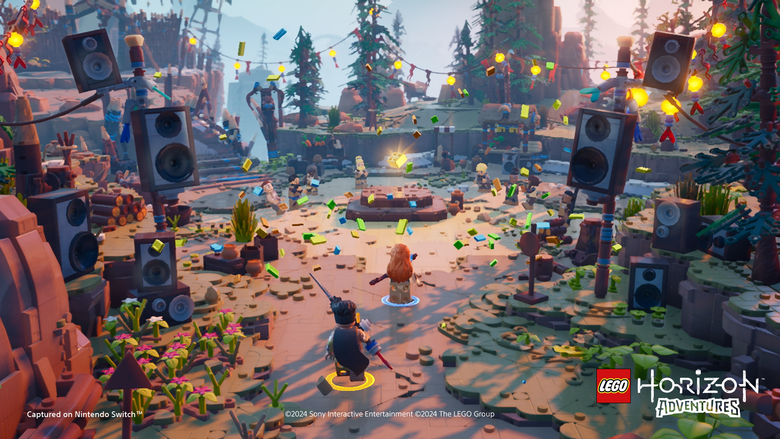
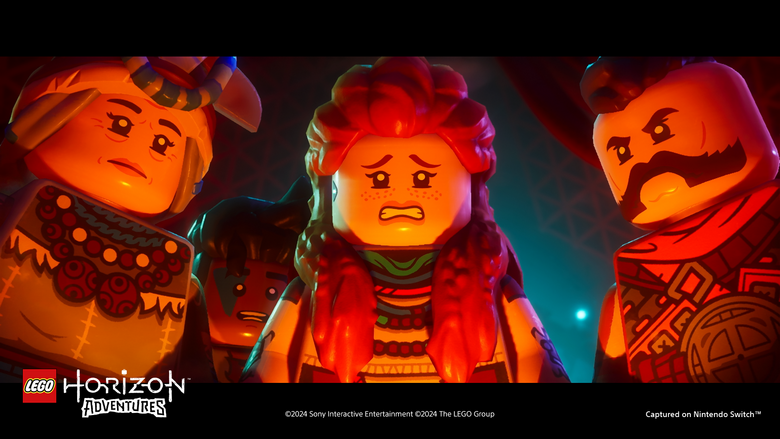
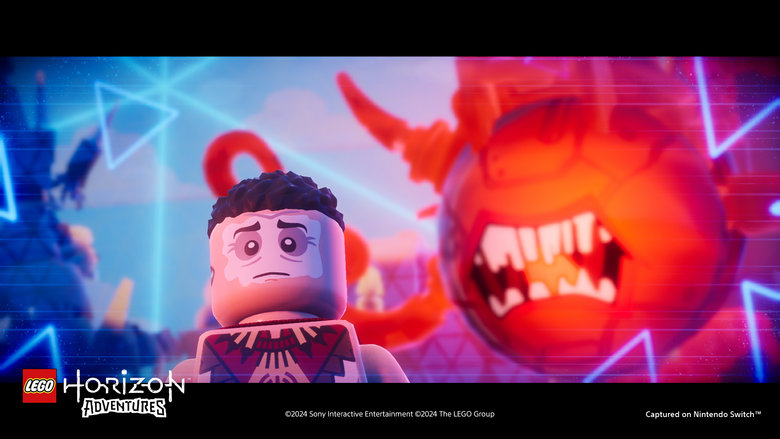
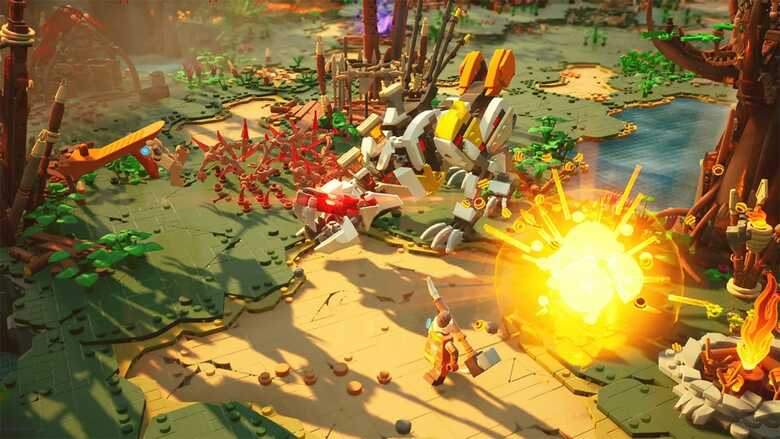
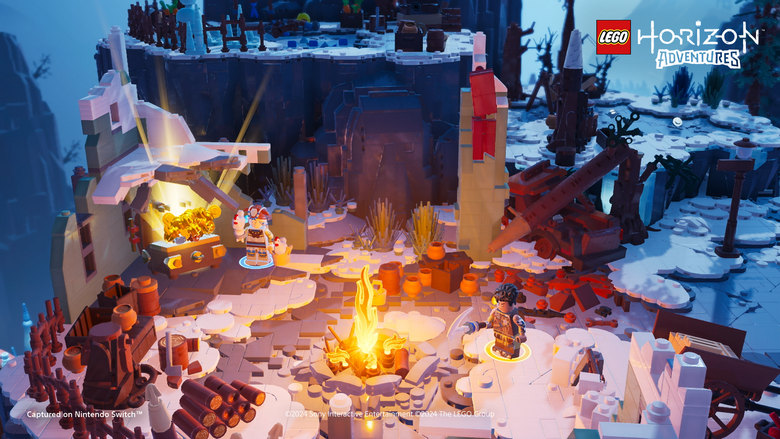
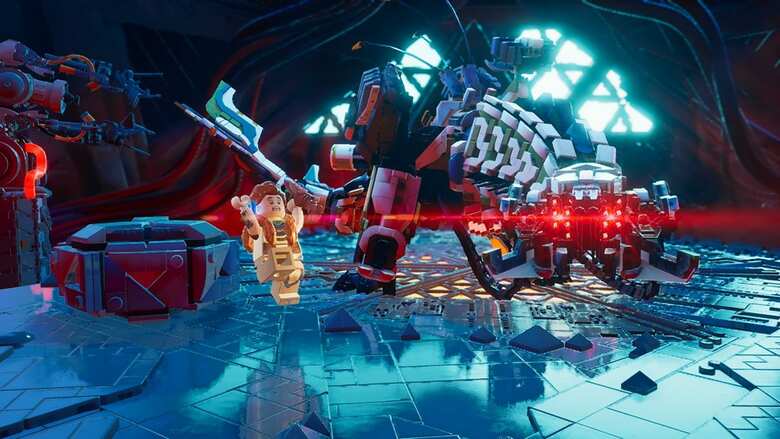
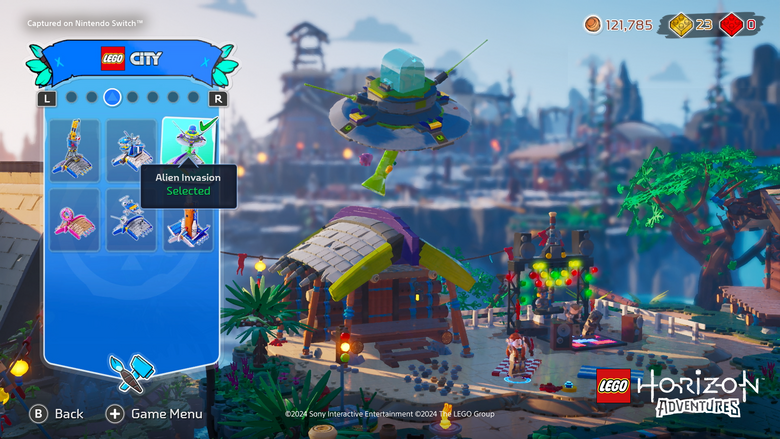
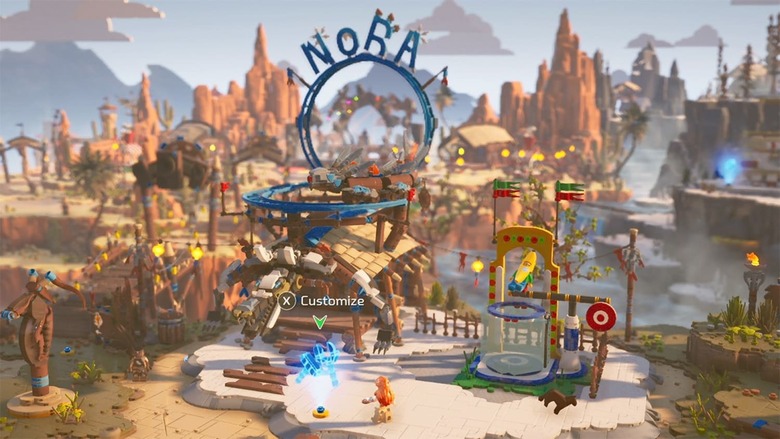
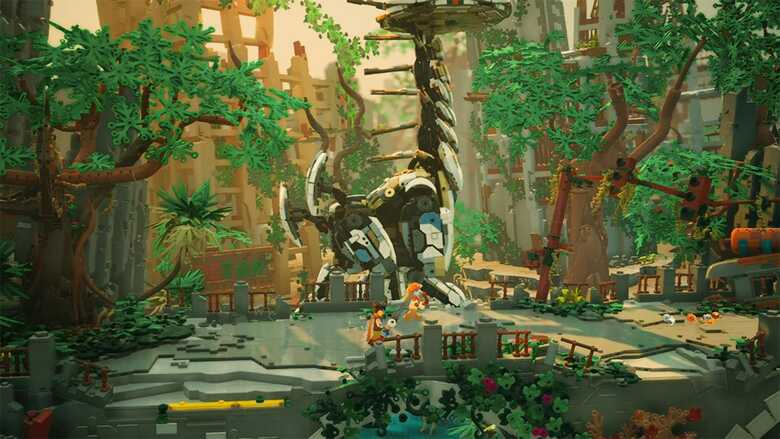
Comments (0)